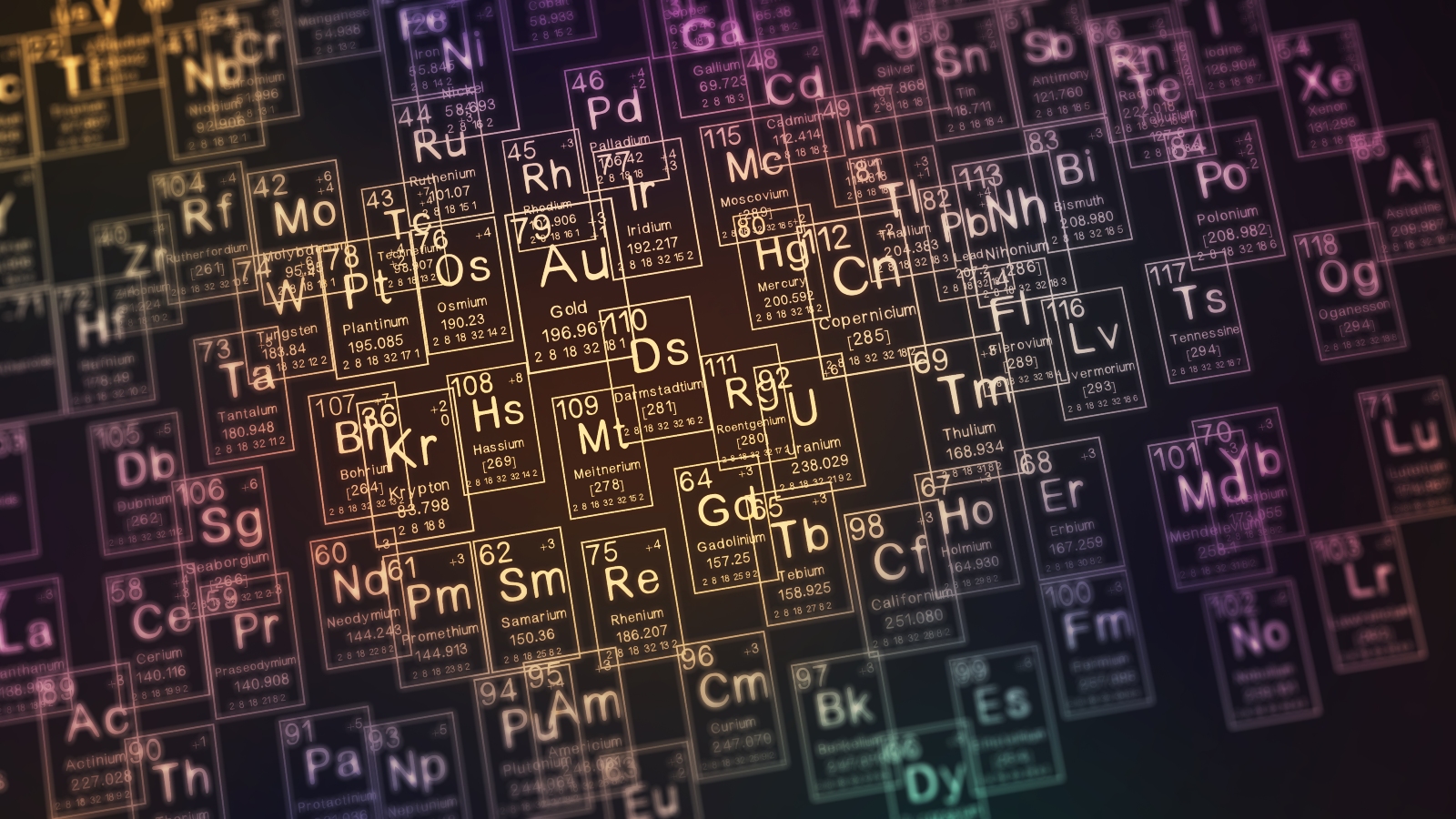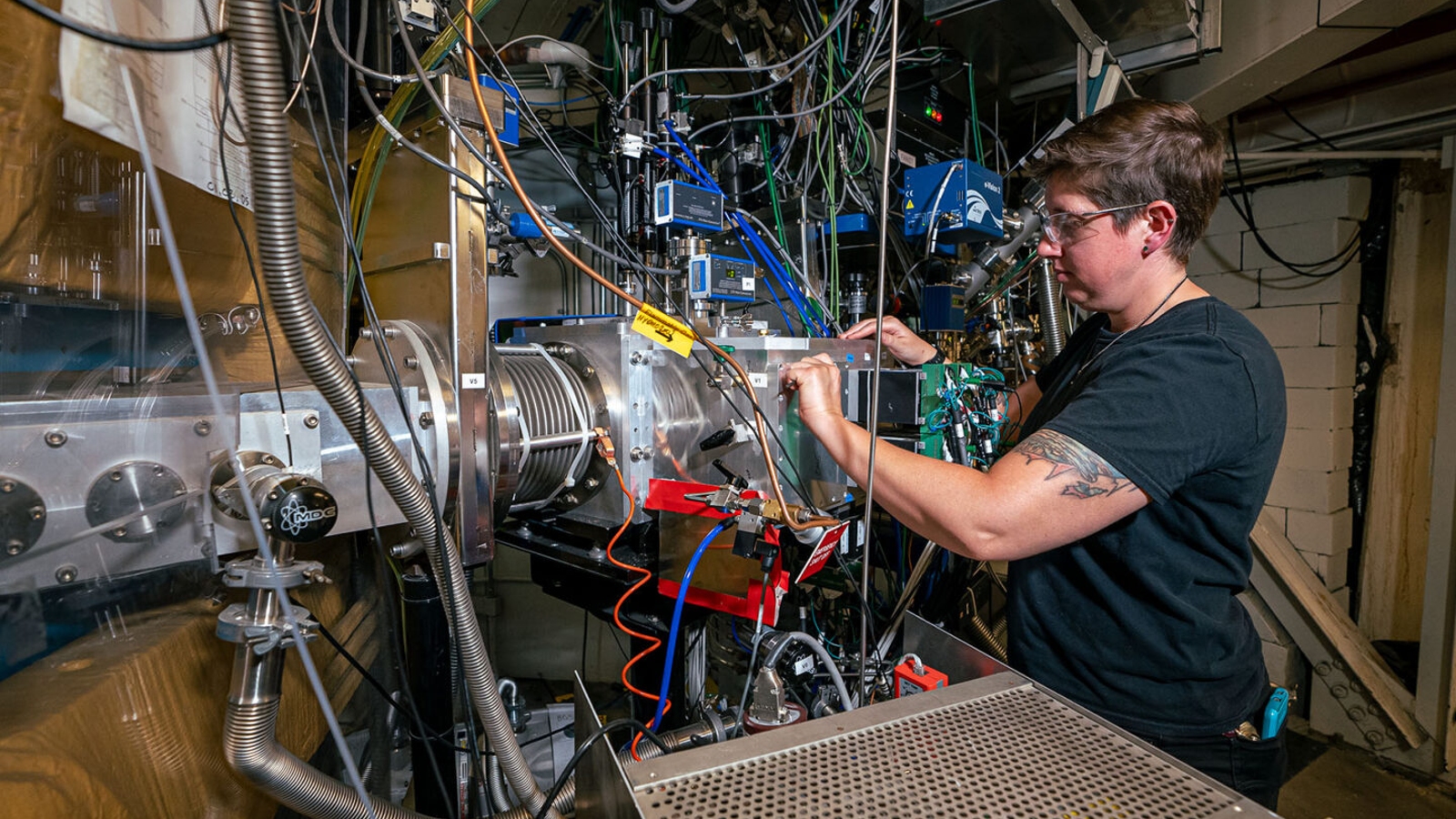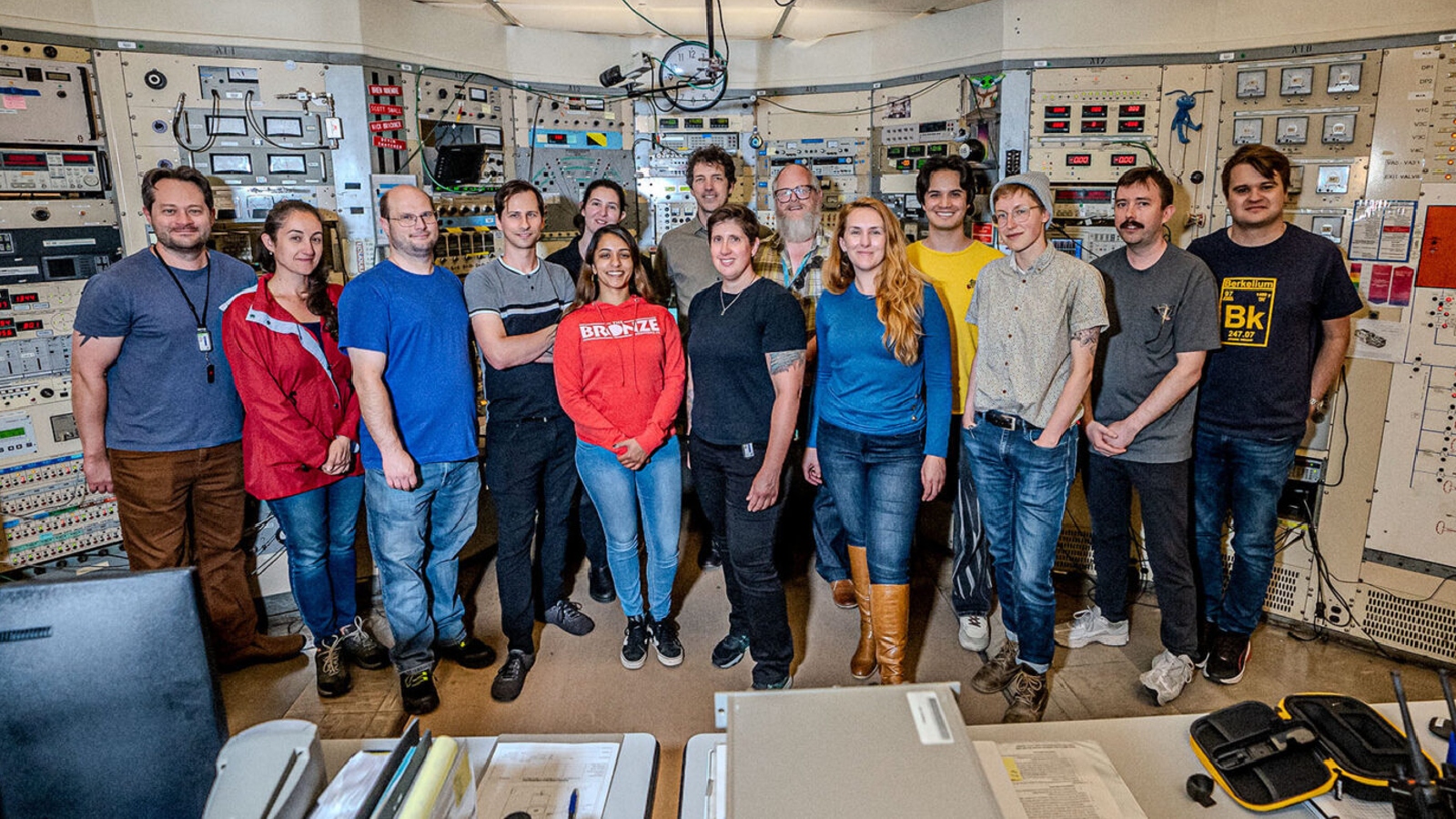Scientists just got 1 step closer to creating a 'superheavy' element that is so big, it will add a new row to the periodic table
Scientists have discovered a new way of creating superheavy elements by firing supercharged ion beams at dense atoms. The team believes this method could potentially help synthesize the hypothetical "element 120," which would be heavier than any known element.

Researchers may have found a way to create a new superheavy element, known as "element 120," which would be so hefty that it would need to be put in a new row on the periodic table of elements. If they can create this hypothetical element, its atoms could represent an "island of stability" that could revolutionize heavy-element chemistry.
There are currently 118 known elements listed on the periodic table; from hydrogen, which has a single proton in its nucleus, all the way up to oganesson, which was officially named in 2016 and has at least 294 subatomic particles packed into the centers of its atoms (118 protons and at least 176 neutrons).
However, researchers know that, theoretically, there should be even heftier elements in the cosmos — and they have even predicted what these elements will look like and how they'll act. But to find them, we either have to discover new ways to synthesize them on Earth or scour the solar system for their potential whereabouts.
The two most promising potential element candidates are element 119, tentatively named ununennium, and element 120, aka unbinilium. These elements are so massive that they do not fit in any of the seven rows that make up the periodic table. If they are created, they will be added to a new eighth row on the iconic chart. However, neither has been synthesized, despite multiple attempts.
Related: Why are rare earth elements so rare?

In a new study, published Oct. 21 in the journal Physical Review Letters, researchers demonstrated a new technique for creating the superheavy element livermorium (element 116) by bombarding plutonium-244, an isotope of plutonium with extra neutrons, with vaporized ions, or charged atoms, of titanium.
The researchers think the same technique can be used to create unbinilium, by shooting titanium ions at isotopes of californium, which is heavier than plutonium. The new study is an important proof of concept that will allow the scientists to step up their search for the hypothetical element, they wrote.
Get the world’s most fascinating discoveries delivered straight to your inbox.
"This reaction had never been demonstrated before, and it was essential to prove it was possible before embarking on our attempt to make [element] 120," study lead author Jacklyn Gates, a nuclear scientist at Lawrence Berkeley National Laboratory (Berkeley Lab) in California, said in a statement. "Creation of a new element is an extremely rare feat. It's exciting to be a part of the process and to have a promising path forward."
However, it could be some time before the researchers can create unbinilium. In this study, it took over 22 days to create just two atoms of livermorium inside Berkeley Lab's 88-Inch Cyclotron machine, which was constantly shooting titanium ions at the plutonium isotope. However, it could take even longer for unbinilium to form.
"We think it will take about 10 times longer to make [element] 120 than [element] 116," study co-author Reiner Kruecken, a nuclear scientist at Berkeley Lab, said in the statement. "It's not easy, but it seems feasible now."

Normally, superheavy elements quickly break down once they are formed because they are highly unstable. However, researchers predict that once elements reach a certain size, they will reach an "island of stability" where they will remain intact considerably longer than current known superheavy isotopes.
Unbinilium is expected to reach this island of stability, meaning its creation would open up a range of possibilities for researching superheavy elements, the study authors said. However, there is also a chance that the hypothetical element will not behave as expected.
"When we're trying to make these incredibly rare elements, we are standing at the absolute edge of human knowledge and understanding, and there is no guarantee that physics will work the way we expect," study co-author Jennifer Pore, a nuclear scientist at Berkeley Lab, said in the statement.
Think you know the elements? Test your knowledge with our new periodic table quiz, and try to guess the names of all the elements in just 10 minutes.

Harry is a U.K.-based senior staff writer at Live Science. He studied marine biology at the University of Exeter before training to become a journalist. He covers a wide range of topics including space exploration, planetary science, space weather, climate change, animal behavior and paleontology. His recent work on the solar maximum won "best space submission" at the 2024 Aerospace Media Awards and was shortlisted in the "top scoop" category at the NCTJ Awards for Excellence in 2023. He also writes Live Science's weekly Earth from space series.


